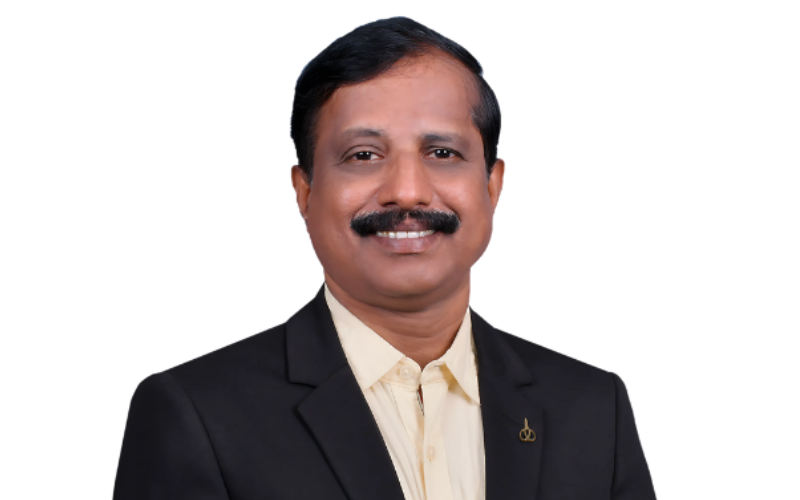An interview from K. Ramesh Babu, CEO, TEXCONN SOLUTIONS
Our products are widely used in textiles and heavy industries. The goal is to reduce power bills without compromising output
TexMart : Could you brief us about Texconn Solutions?
Ramesh Babu : Texconn Solutions is a Coimbatore-based company that began 2020, but our journey starts during 2009, as POWERON PROJECTS, a BEE Accredited Energy Audit Firm with Mr. Ashok Sethuraman (BEE Accredited Energy Auditor) and we completed more than 800 audit in industries, including Textile and other industries and evolved into a manufacturer of sustainable industrial Energy saving Axial fans.
With over 22 years of expertise, we serve industries like textiles, iron furnaces, and engineering. We focus on Textile Humidification plant energy optimization through high-performance fans that reduce power costs by 20–35%. Our fans are installed across India, with over 500 successful projects. Texconn Fans stands for innovation, reliability, and energy-conscious engineering.
TM: What are your company’s principles, mission?
RB : Our mission is to help industries conserve energy through smart, efficient systems. We envision Texconn as a global leader in sustainable fan technologies that drive real impact. Our values include customer satisfaction, technical excellence, and environmental responsibility. We encourage a culture of learning, trust, and accountability. Every employee plays a role in building a greener industrial future.
TM: Can you list the main products Texconn Solutions offers?
RB : Texconn manufactures Axial Flow Fans, and other energy-saving air systems. Each fan is custom-built for textile mills performance and low power use. We focus on airflow optimization for spinning mills Humidification plants, which consumed more than 10% of the whole plant energy. Our products are widely used in textiles and heavy industries. The goal is to reduce power bills without compromising output.
TM: How do you ensure Texconn fans work efficiently in Textile Mills?
RB : Our Texconn fans are designed for high static pressure and smooth airflow. With aerodynamic blades and efficient design, they reduce power use significantly. We use lightweight, durable materials that enhance performance. These fans are ideal for textile processing and ducted systems. Clients report 25–35% energy savings after installation.
TM: What key factors do you consider when selecting a Axial fan for textile finishing?
RB : We assess airflow volume, pressure needs, and space constraints before recommending a fan. Temperature, humidity, and dust levels are also considered. Efficiency is balanced with durability and noise control. We also ensure easy integration with existing setups. Customization helps us meet varied textile finishing demands.
TM: How do blade design and materials affect the performance of Axial fans?
RB : Blade shape and pitch directly affect performance and energy use. Also the existing conventional model heavy weight fans not giving expected performance. We use Nylon and some other imported materials, for blades for strength, low noise, and corrosion resistance. Proper blade alignment with dynamic balancing, ensures smooth airflow with minimal loss. These features help maintain output with less motor load. It’s a key reason for our fans’ efficiency.
TM: What challenges have you faced working with axial fans in humid environments, and how did you resolve them?
RB : Humidity can reduce fan efficiency and corrode components over time. We used non corrosive material for Hub and blades. Our blades are tested for moisture endurance and vibration stability. With the right material mix, performance stays consistent. This makes our fans ideal for textile and process industries.
TM: How do you adjust axial fan blades to optimize airflow and save energy?
RB : Blade pitch can be adjusted to control air pressure and volume. We use modular designs for quick tuning during setup. Pitch changes help balance performance and energy use. Clients get customized settings based on process needs. After adjusting required blade angle, every fan will be dynamically balanced for better performance, and increase the motor and its bearing life. This feature boosts system efficiency without replacing the entire unit.
TM: What maintenance is necessary to keep fans running effectively over time?
RB : Regular cleaning and visual inspections prevent dust build up and imbalance. Bearings should be greased, and alignment checked every few months. A well-maintained fan performs efficiently and lasts longer.
TM: How does ducting design help reduce energy consumption in textile systems?
RB : Duct layout affects airspeed, turbulence, and backpressure. A well-designed duct ensures uniform flow and reduces motor load. We recommend ducts to minimize bends and leakage. Proper ducting lowers energy usage and noise levels. It complements our fans’ performance perfectly.
TM: What approach would you take to install energy-saving equipment in older textile machinery?
RB : We enquired customers, to get basic data, to design our demo product, and replace with our Texconn Fans with existing old fans, and check the before and after performance in air and power performance and report our Energy saving study details, with savings in % and ROI, after getting performance observation, we can commit to replace systems for all available fans.
TM: How do you measure energy savings after equipment installation?
RB : We compare pre- and post-installation energy usage using meters and logs. Anemo meter and Mano meter, motor load analysis, and kWh readings help track improvements. Reports show ROI in months, not years. Clients also see improved airflow and reduced maintenance costs. Our results are data-backed and transparent.
TM: Technical features of your manufacturing plant (Capacity, Facilities, etc.)?
RB : Our plant is equipped with precision tools and advanced testing systems. We use CFD analysis for aerodynamic design, enabling us to produce high-efficiency fans. Our Texconn Fans built with quality imported materials like Nylon with GRP for strength and long life. Our production focuses on achieving high air volume with low energy use. The facility ensures quality control at every stage.
TM: How does Texconn Solutions ensure quality and performance in textile manufacturing through advanced testing and innovative technology?
RB : We apply strict quality control, field tests, and airflow assessments before dispatch. Designs are made using performance modelling and customer feedback. Every fan is inspected for noise, vibration, and energy efficiency. We use durable, corrosion-resistant materials for long life. Our goal is to exceed industry standards with every unit.
TM: May we know about your environmental management policies?
RB : Sustainability is a core priority at Texconn. Our products are built to reduce electricity usage and help clients lower their carbon footprint. We ensure all processes—from design to delivery—follow eco-friendly standards. Suppliers are also encouraged to meet responsible sourcing practices. Our fans promote clean energy use in industrial setups.
TM: Challenges you are facing in the market?
RB : A major challenge is the slow adoption of energy-efficient systems by traditional industries. Some resist due to budget concerns or lack of awareness. We address this through real-life case studies and savings data. We also invest in educating clients about long-term gains. Competition exists, but our results speak for themselves.
TM: Future business plans goal in the industry?
RB : Texconn aims to expand across India and begin exports to emerging global markets. We are developing new energy-saving tools and smarter fan controls. Research and development will play a bigger role in our growth. We also aim to enter automation-based ventilation systems. Our vision is to make sustainable air movement a global standard.
TM: How are technological advancements driving the growth and transformation of the Indian textile industry?
RB : Automation, energy-saving systems, and eco-friendly machinery are transforming the sector. Texconn’s fans fit perfectly into this movement. Companies are adopting smart ventilation and better power planning. Our products help meet these needs without major changes. The trend is shifting toward cost-effective sustainability.
TM: How has the Indian textile industry transformed in recent years, and what key trends will shape its future growth?
RB : The industry is moving toward automation, green energy, and export readiness. Demand for energy-efficient machinery is at an all-time high. With ESG goals in focus, companies want solutions like ours. Texconn plays a key role in meeting these standards. We help make factories future-ready.

